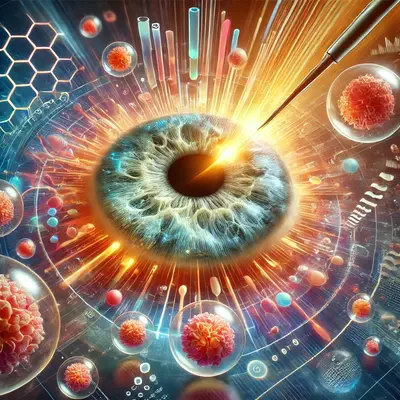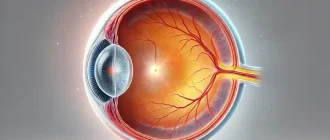Stem cell therapy is capturing the spotlight as a potential game-changer for treating a wide range of eye diseases. From macular degeneration to glaucoma, scientists and doctors are diving into how these unique cells could help restore vision and transform lives. But just how realistic is this promise? Let’s take a closer look at the exciting possibilities of stem cell therapy for eye health.
What Are Stem Cells and How Can They Help Your Vision?

Stem cells have a unique ability to transform into different types of cells, making them vital for repairing damaged tissues. In the case of eye health, stem cells could potentially replace damaged retinal cells, promote the regrowth of corneal tissue, or restore other critical parts of the eye.
Consider macular degeneration—a major cause of vision loss in adults. Scientists are using pluripotent stem cells to create new retinal cells that can replace the damaged ones. This type of therapy could be life-changing, potentially restoring vision for millions of people.
Breakthrough Stories: Real People, Real Results
Meet Margaret, a 65-year-old retired teacher who was diagnosed with age-related macular degeneration. After participating in an experimental stem cell treatment, Margaret regained some of her lost vision, allowing her to enjoy reading and gardening once again. While these results are promising, it’s important to remember that stem cell therapy for eye diseases is still mostly experimental, and individual results can vary.
Another remarkable case is Carlos, who suffered from advanced glaucoma. After joining a clinical trial for stem cell therapy, Carlos experienced improvements in his peripheral vision—an outcome that seemed impossible just a few years ago.
Current Applications of Stem Cell Therapy for Eye Diseases
Stem cell therapies are currently being explored for several eye conditions, including:
- Macular Degeneration: Replacing damaged retinal pigment epithelial cells.
- Glaucoma: Regenerating retinal ganglion cells to restore vision.
- Corneal Disorders: Using stem cells to repair or regenerate corneal tissue damaged by injury or disease.
Table: Types of Eye Conditions Treated with Stem Cell Therapy
| Eye Condition | Stem Cell Type | Treatment Goal |
|---|---|---|
| Macular Degeneration | Pluripotent Stem Cells | Retinal Cell Regeneration |
| Glaucoma | Mesenchymal Stem Cells | Restoration of Retinal Ganglion |
| Corneal Damage | Limbal Stem Cells | Corneal Tissue Repair |
Challenges and Risks
While stem cell therapy holds incredible potential, there are still challenges to overcome. Turning stem cells into the specific types of cells needed for the eyes is complicated, and making sure these cells integrate properly without causing issues is still being researched. Dr. Helen Carter, a leading expert in regenerative medicine, says, “We are on the brink of some very promising developments, but there’s still much we need to understand about long-term safety.”
There are also ethical questions surrounding the use of embryonic stem cells, and the regulations and funding for this kind of research vary from country to country. Because of these challenges, it could still be several years before stem cell therapy for eye conditions becomes widely accessible.
Success Rates and Future Outlook
Although many treatments are still in clinical trials, the early results have been very encouraging, with significant improvements in patients’ quality of life. Dr. Raj Patel, a pioneer in eye therapies, mentions, “Patients who are eligible for these treatments are experiencing remarkable gains in their vision.” He adds, “Although these treatments are not yet mainstream, the future looks incredibly hopeful.”
Looking ahead, many experts believe that stem cell therapy could change how we treat not only eye diseases but also many other conditions affecting vision. With advancements in gene editing and stem cell cultivation, we could be entering a new era of personalized medicine.
How Close Are We to Widespread Use?
While the science behind stem cell therapy is promising, there are still hurdles before these treatments become widely available for eye diseases. One key issue is the cost and the specialized expertise required to perform these procedures effectively. Clinical trials are currently focused on proving safety and effectiveness, but making these treatments accessible to everyone will require overcoming these significant challenges.
Real Hope or Just Hype?
For people losing their vision, stem cell therapy represents a ray of hope. Jane Thompson, a participant in a recent clinical study, said, “I’d almost given up on being able to see my grandchildren clearly again. Stem cell treatment brought back a light I thought I had lost forever.”
However, it’s crucial to keep expectations realistic. While researchers are making great strides, it could still be several years before these treatments are fully approved and accessible to the public.
Moving Forward with Hope
Stem cell therapy for eye diseases is one of the most exciting areas of medical research today. With ongoing advancements and more clinical trials, the possibility of restoring vision is growing. The future may hold effective, personalized treatments that could change the lives of people with severe vision loss—one stem cell at a time.
If you’re considering these treatments, it’s important to consult with medical professionals and stay informed on the latest clinical trials and research. Even though the journey may be long, the hope seeing a brighter future makes it worthwhile.





